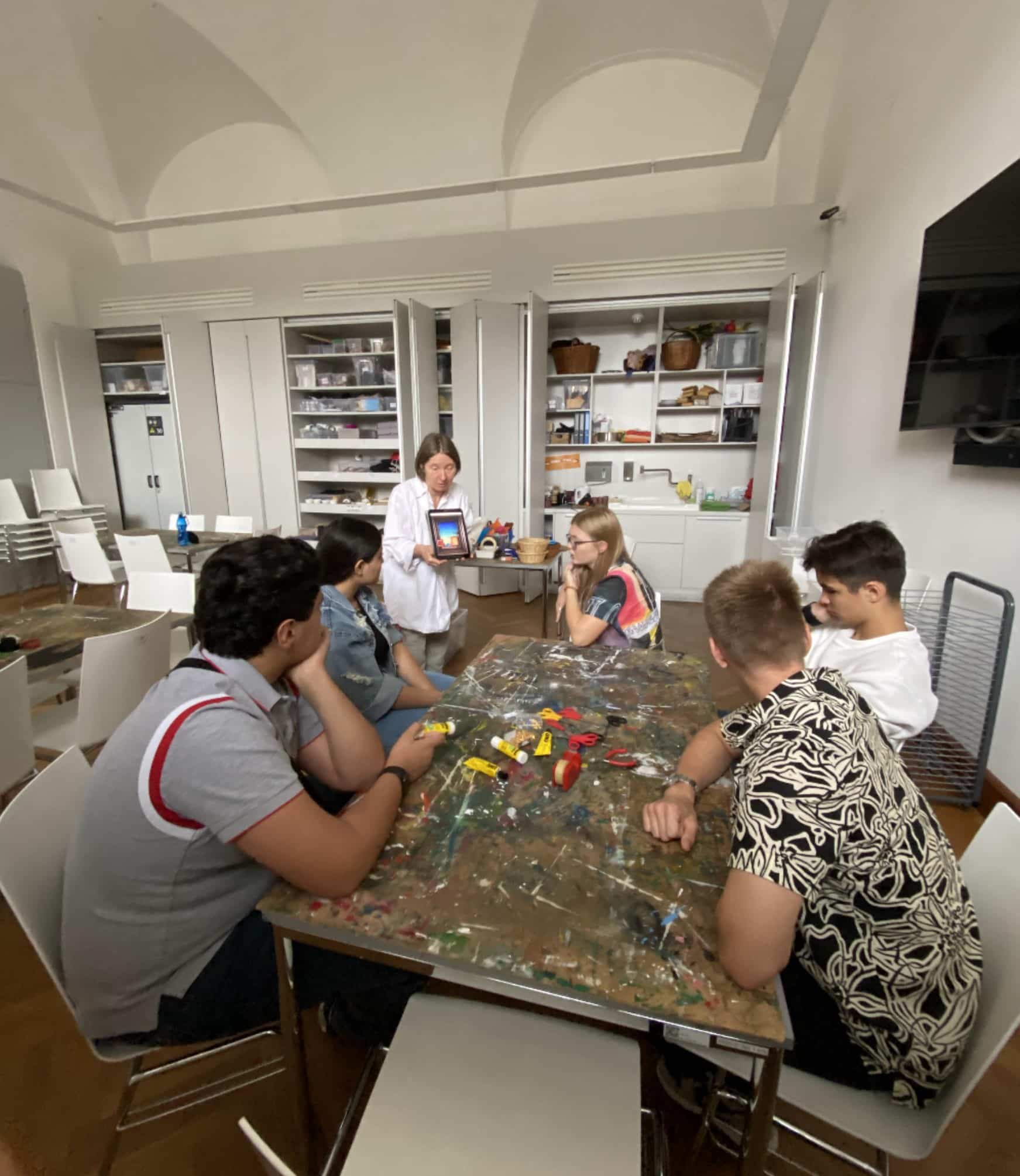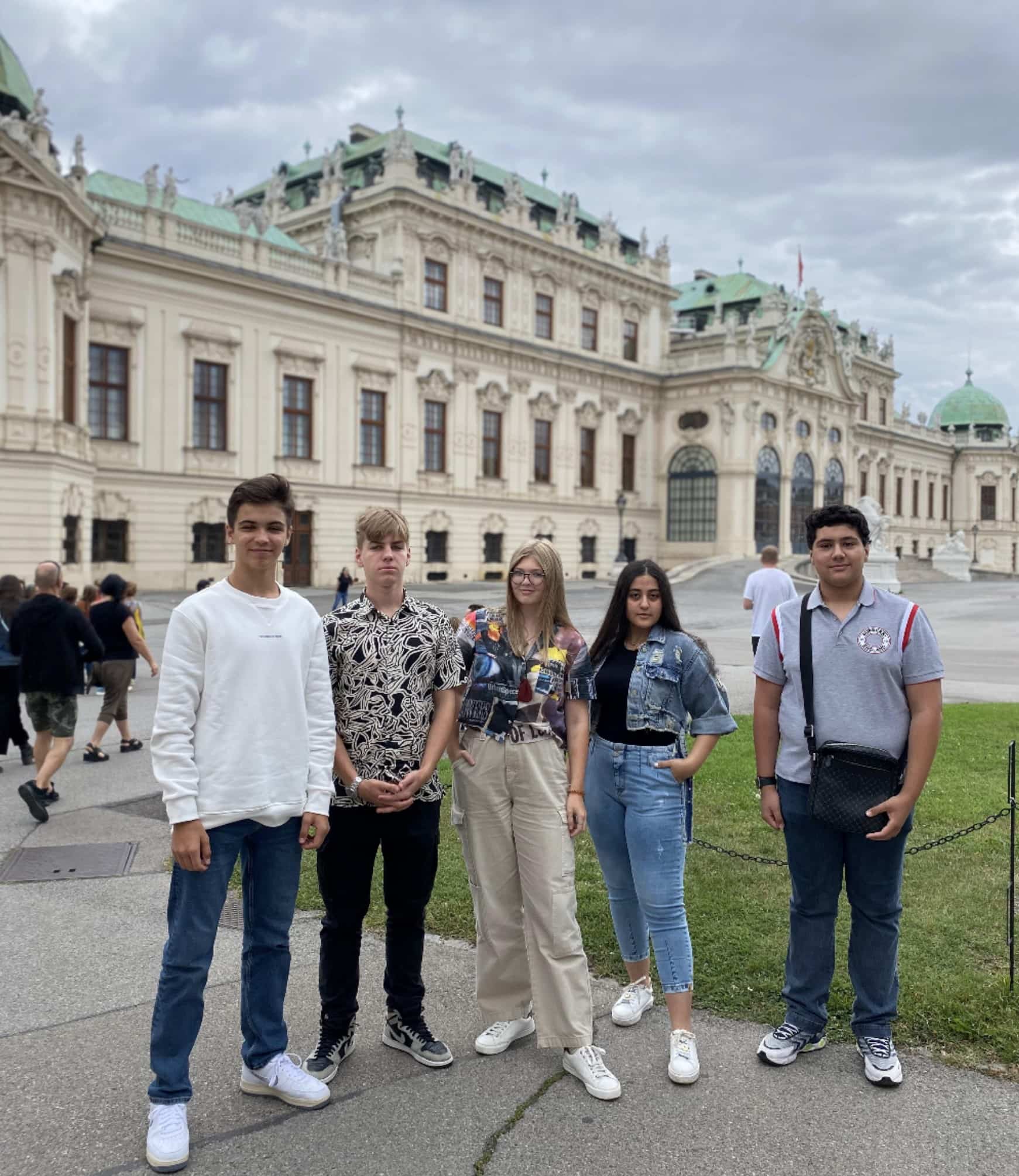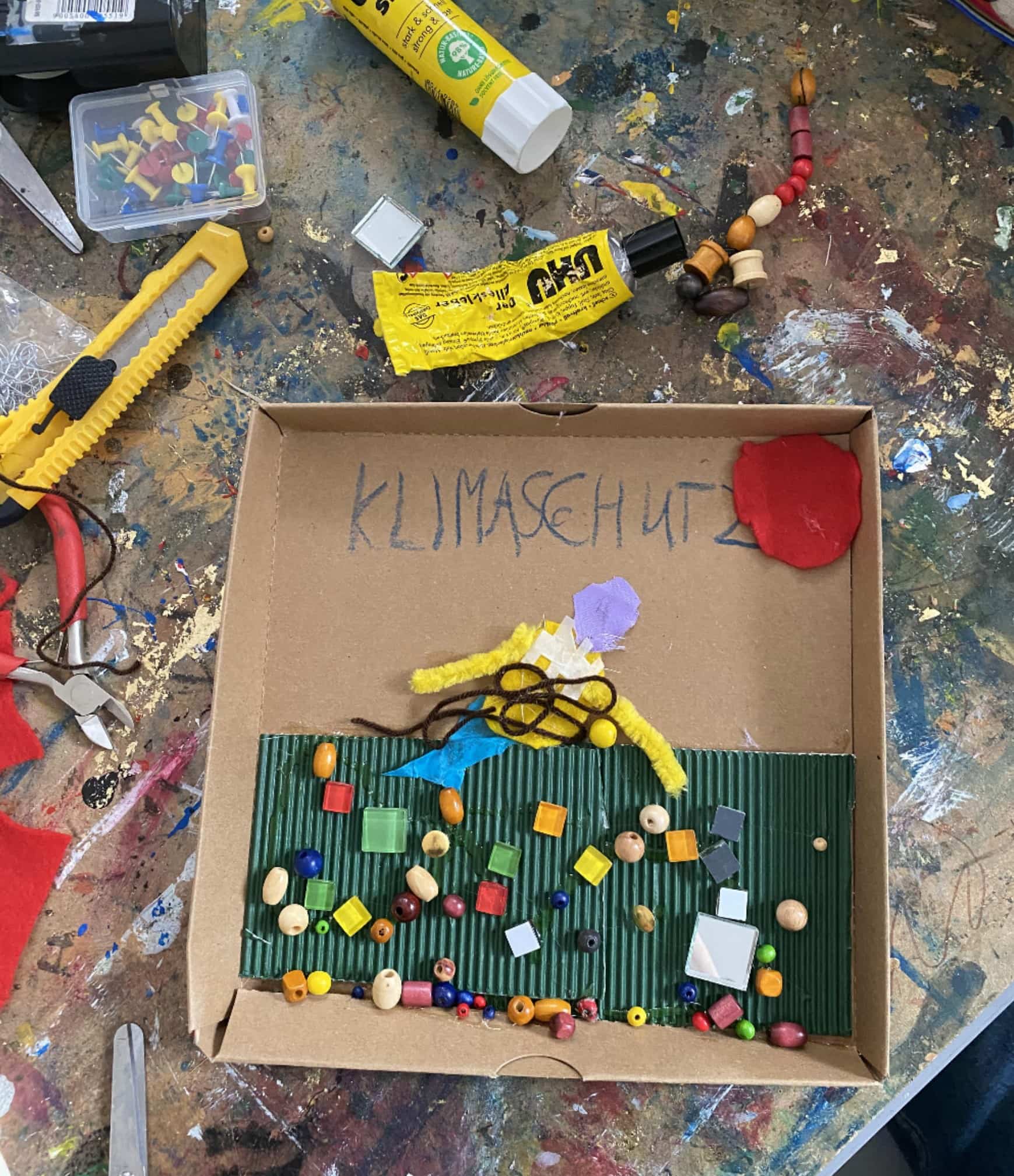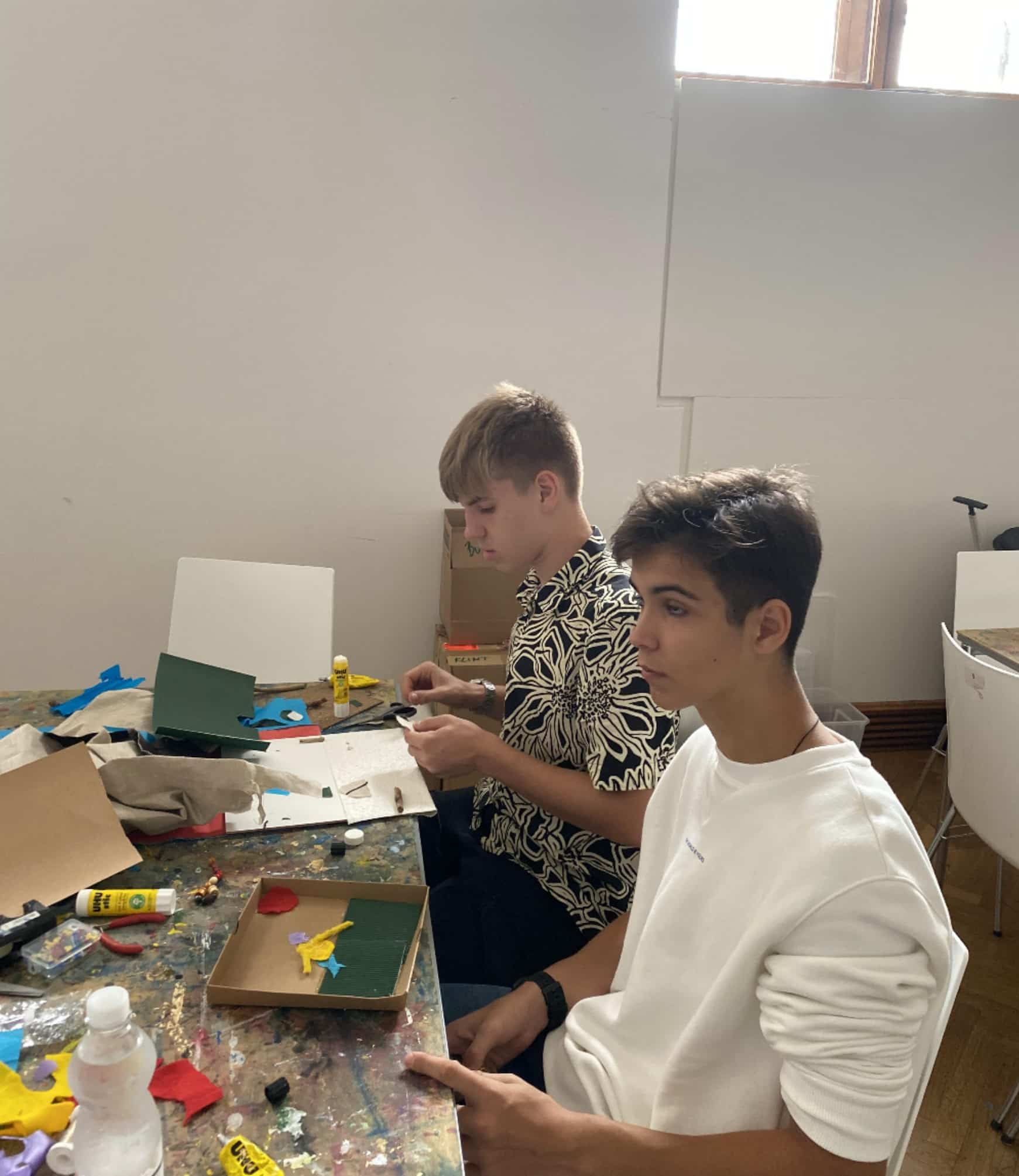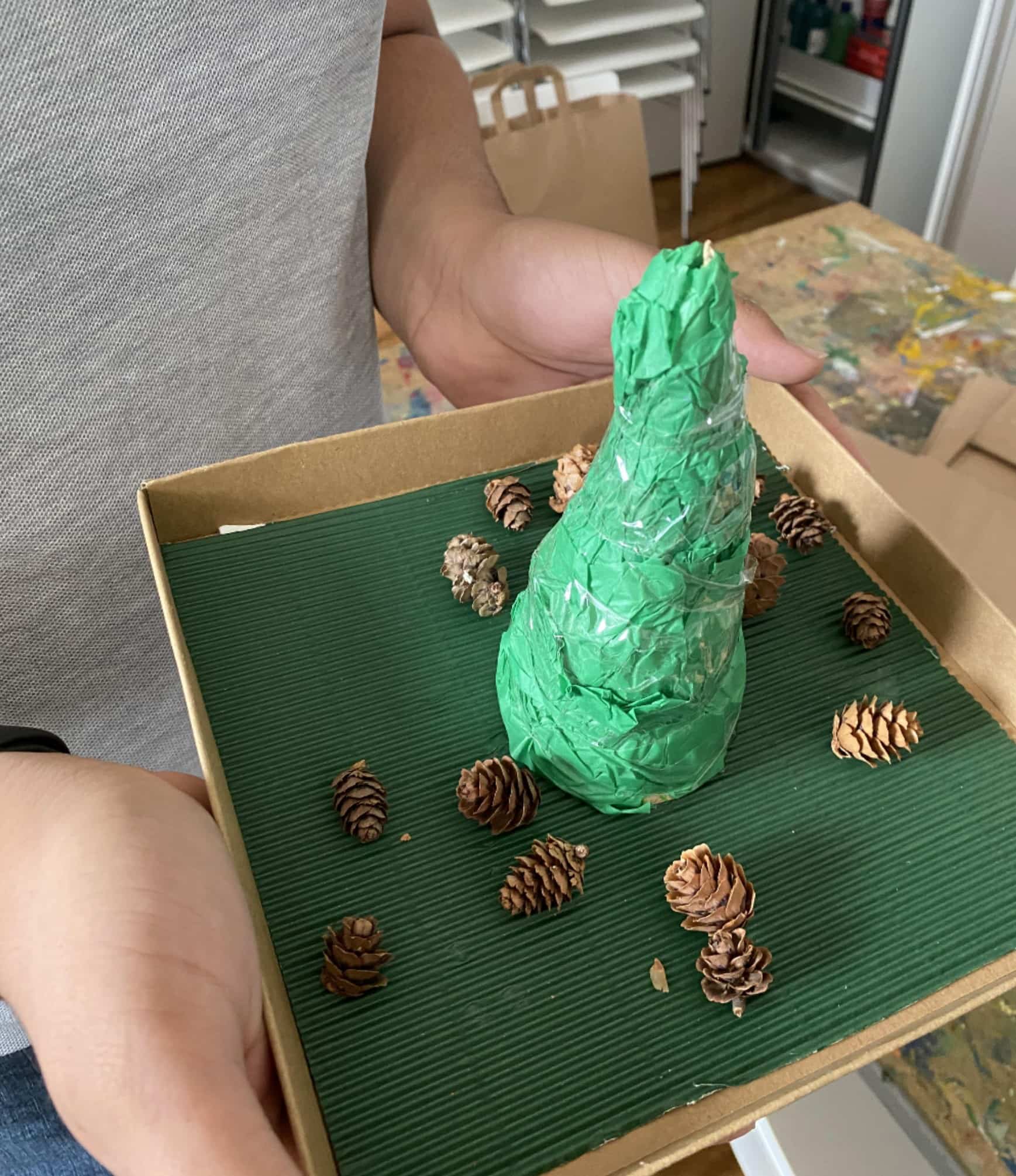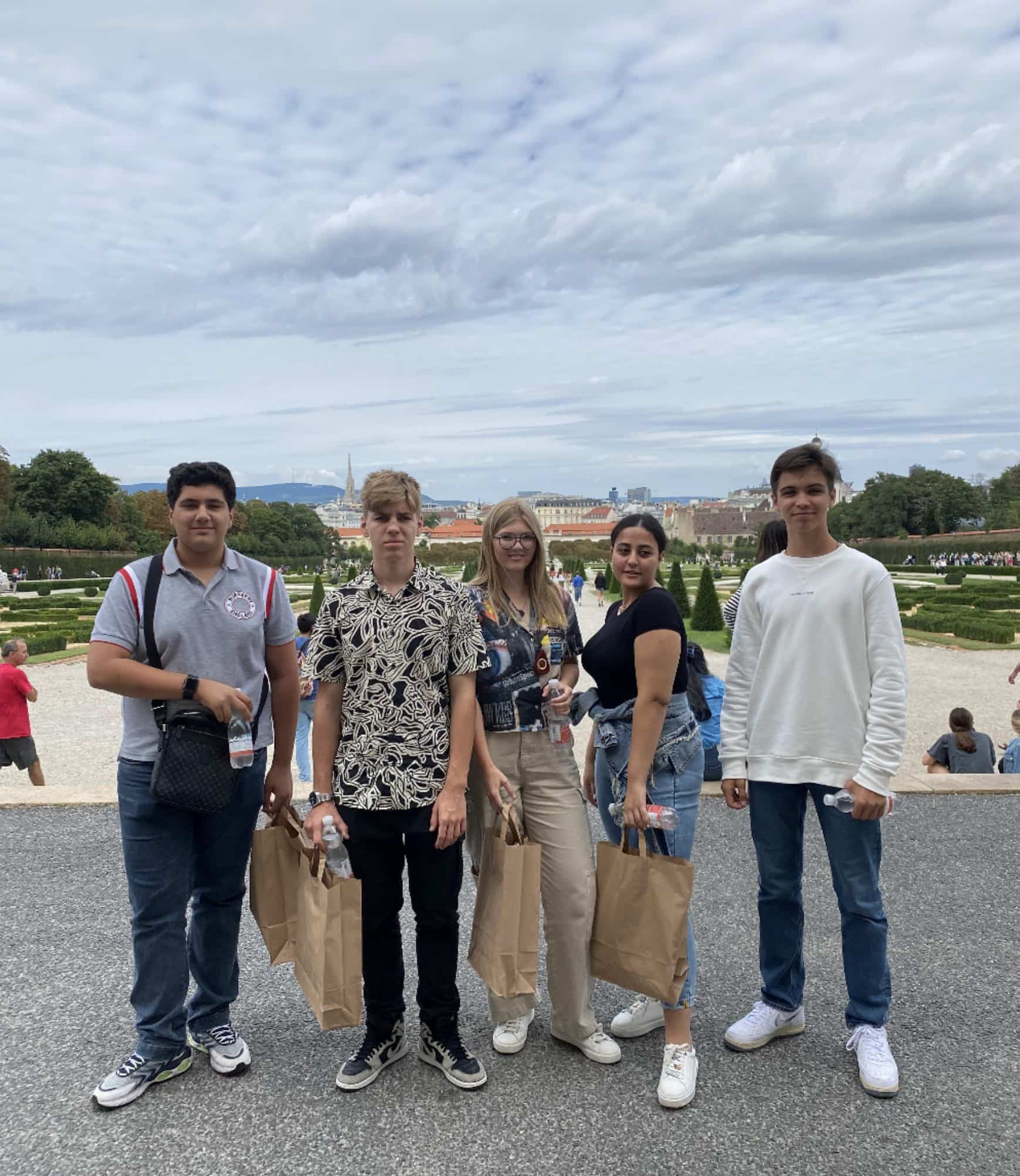Art is a way of knowing the world, through the lenses of individual emotion, talent, and senses. Practicing art is an important part of individual growth and development, especially at a young age – this is how our students foster and externalise their creative potential and artistic techniques.
Yet, practicing art without having any knowledge of it is like going for a walk when it is pitch dark outside. It is an experience but a purposeless and directionless one at that. This is why the new Art Workshop series, introduced by SKIS this year, first exposes students to the historical and visual framework of different techniques and art forms at a cultural context of a museum and only then asks them to replicate what they have learnt on their own.
The first trip of the series was to the Schloss Belvedere Museum where Grade 10 explored the technique of assemblage, looking at the museum’s collection, and then created their own artworks.
The workshop was curated by an experienced museum guide.
Assemblage, a hybrid art form, which emerged in the 20th century and was pioneered by the artists such as Marcel Duchamp and Jean Dubuffet, experimented with the use of every day objects as as elements of the collage, creating three-dimensional, mixed-media assemblages. It was often a critique of the conventional art and commercial consumerist culture.
Grade 10 did a great job creating their own projects – and enjoyed the walk across the beautiful museum. Not only did they have fun, but also explored their ideas in continuity and contribution to the body of knowledge that existed before. This is what we call a learning experience and a valuable workshop, in arts and beyond.

